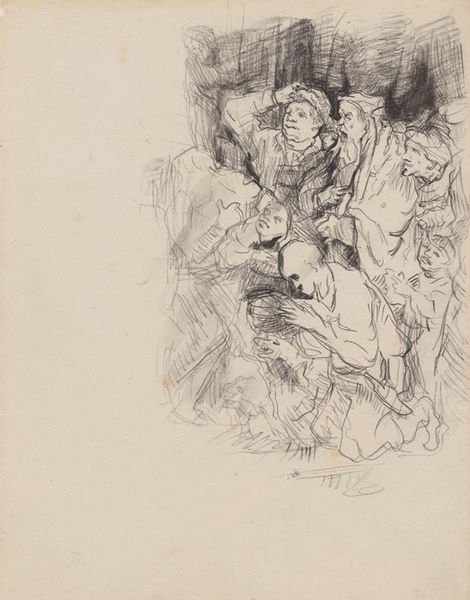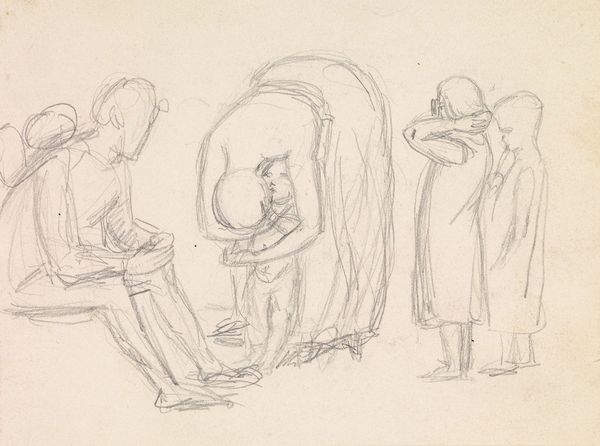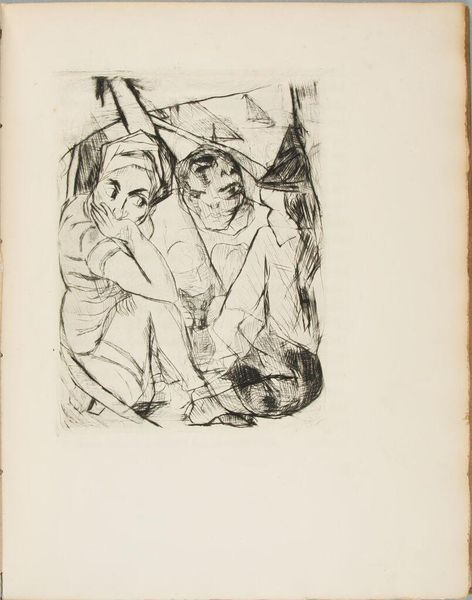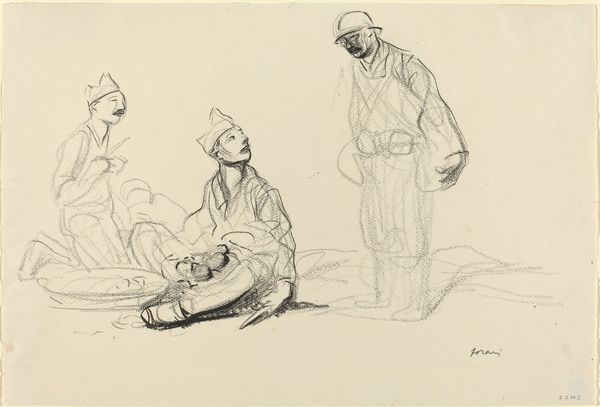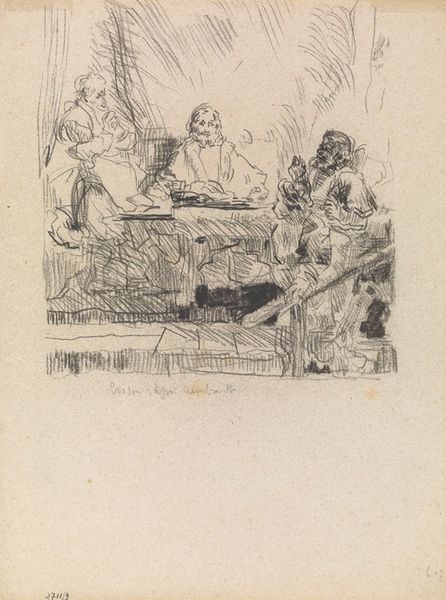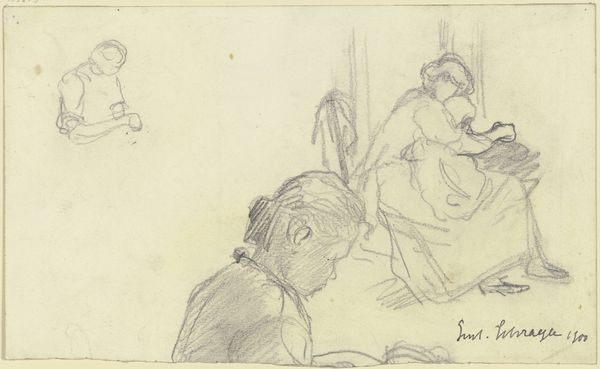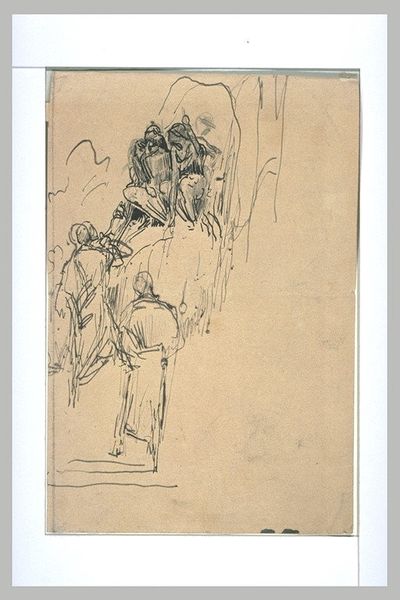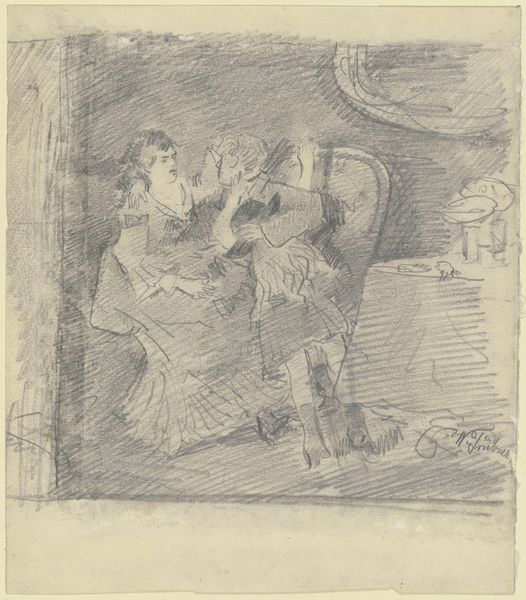
drawing, pencil, pen
#
portrait
#
drawing
#
imaginative character sketch
#
light pencil work
#
street-art
#
figuration
#
personal sketchbook
#
idea generation sketch
#
sketchwork
#
ink drawing experimentation
#
pen-ink sketch
#
pencil
#
sketchbook drawing
#
pen
#
genre-painting
#
storyboard and sketchbook work
#
sketchbook art
#
realism
Dimensions: image: 19.5 x 22.5 cm (7 11/16 x 8 7/8 in.) sheet: 30 x 25.8 cm (11 13/16 x 10 3/16 in.)
Copyright: National Gallery of Art: CC0 1.0
Curator: This drawing, known as "Beggars of Naples" by Robert Austin, captures a poignant scene with striking simplicity using primarily pencil and pen. What are your immediate impressions? Editor: Stark. Immediately, there's a feeling of desperation radiating from the figures. It’s like a raw, almost visceral cry frozen in graphite. The looseness adds to the urgency, a moment caught mid-breath. Curator: Indeed. Notice how Austin uses line and shadow. The repetition of raised, imploring hands speaks to shared human vulnerability. What do you make of its stylistic cues, and how those visual elements amplify or undermine any emotional responses it seems designed to elicit? Editor: It's fascinating how he balances realism with almost cartoonish exaggeration. The figures have a stark reality, yet their postures and expressions feel almost archetypal—they tap into a deeper collective memory of suffering. The roughness only enhances that—polished realism might diminish the emotional hit. It's about the universal, not just the individual. Curator: Yes, absolutely. Poverty and supplication as recurring themes through centuries of image making, echoing not only literal history but also biblical allegories—the hands reaching recall imagery from illuminated manuscripts illustrating stories of desperation or the last judgement. Editor: Right, it evokes that immediate, "give us this day" feeling. But it's interesting that "Beggars of Naples" has that specific location tagged to it; does the Naples reference give that history and tradition a new context or spin on older iconographic references? Curator: Perhaps. I feel the "Naples" addendum, combined with Austin’s commitment to realistic portraiture of figures without romanticizing their plight, could potentially create space for a politically engaged reading against dominant stereotypes around "Southern" underdevelopment or generalized tropes about poverty. Austin subtly acknowledges historical narratives without ever exploiting its subjects. Editor: I like that. Acknowledgment without exploitation. That careful balancing act makes all the difference. It stays with you, you know? Curator: Precisely, making the drawing's effect more enduring than just a passing emotional response.
Comments
No comments
Be the first to comment and join the conversation on the ultimate creative platform.



